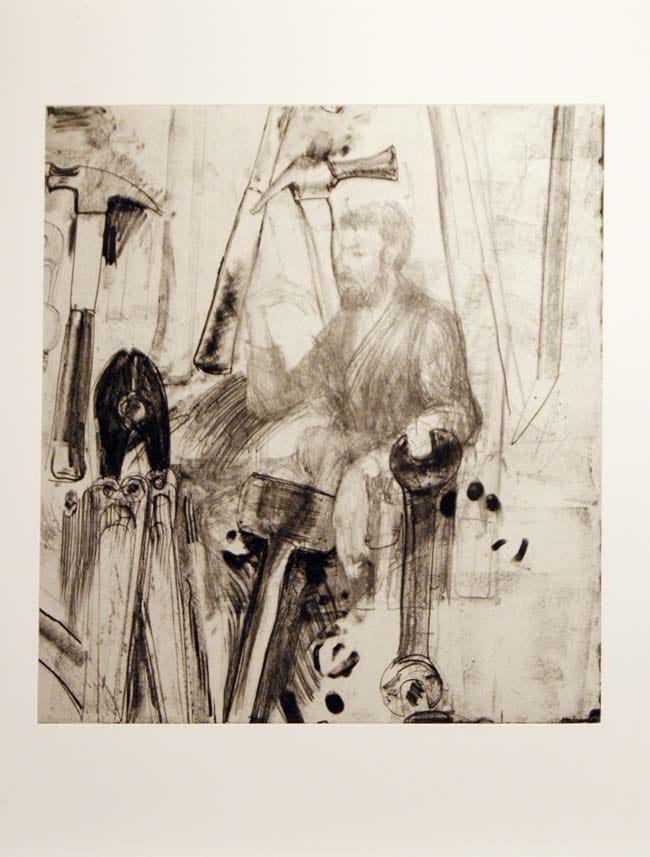American artist Jim Dine rescues and reappoints a graphic history of communism in the latest show at London’s Alan Cristea Gallery.






Before the revolutions of 1989, the world’s two major political ideologies championed different histories and plotted divergent futures. With the fall of communism in Eastern Europe, symbolised most overtly by the fall of the Berlin Wall, an act that would ultimately lead to German reunification in 1990, certain historical narratives and the futures they proposed were cancelled. But while that one act of rocky destruction became an image of communism’s capitulation, what hadn’t been cancelled, at least in the technical sense, were the faces of several lithographic stones held at a socialist art academy on the eastern side of the Wall. These iconographic time capsules carried forty year’s worth of work by artists practising under the duress of a paranoid government and its propagandic control of their visual culture. These lay dormant for years before their discovery by Sarah Dudley and Ulie Kuhle, friends of the American artist Jim Dine.
On receipt of the stones Dine set about recovering the work of those unidentified Eastern Bloc students, carefully combing them with his own motifs, which share a similar pictorial lineage in terms of form and address, in order to both reinterpret and to assert control over the found imagery. (Indeed, Dine’s own family roots stem from Eastern Europe, his grandparents originating from Lithuania and Poland). The resultant prints, which represent two and a half years of work, will form the forthcoming show A History of Communism at London’s Alan Cristea Gallery. Alongside these another show, Jim Dine: Printmaker, will run in the gallery’s second space, exhibiting a selection of recent editions and classic prints by the artist which tells the story of Dine’s fifty years as a printmaker. Printmaking is a particular passion for Dine, who is now considered one of America’s most important living artists; in his own words:
“The thrill for me is inventing, and adding or taking out, changing from one state to another. Handcolouring over a woodcut that’s in black and white, then printing the block again over the colour that I painted on, then taking a rag soaked in turpentine and rubbing it over the print, then putting an etching over that. It’s more than that though; it’s the freedom to change when I want to and for the image to grow.”






A History of Communism & Jim Dine: Printmaker
Alan Cristea Gallery, London
10 September – 7 October 2014
alancristea.com

